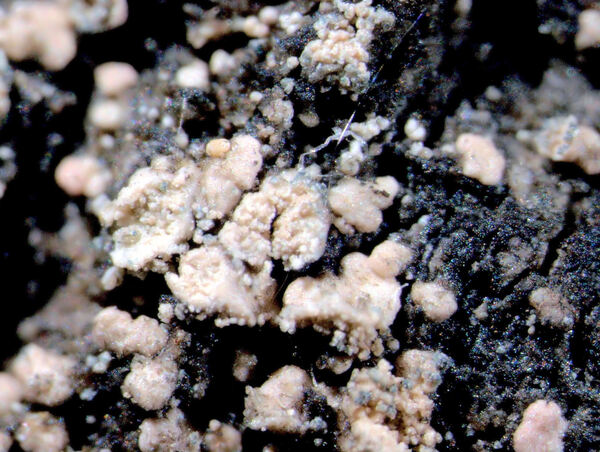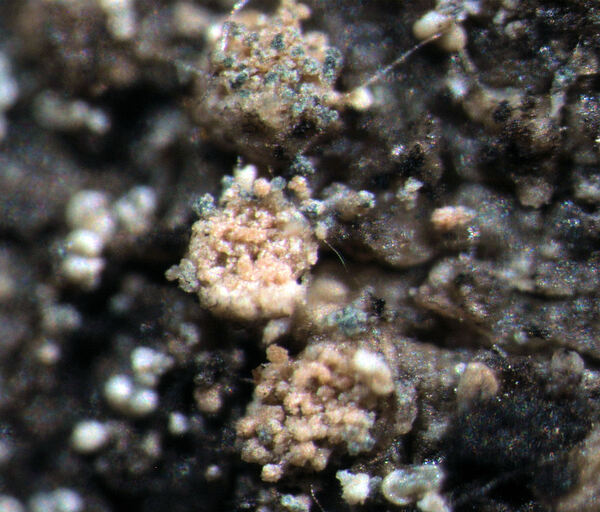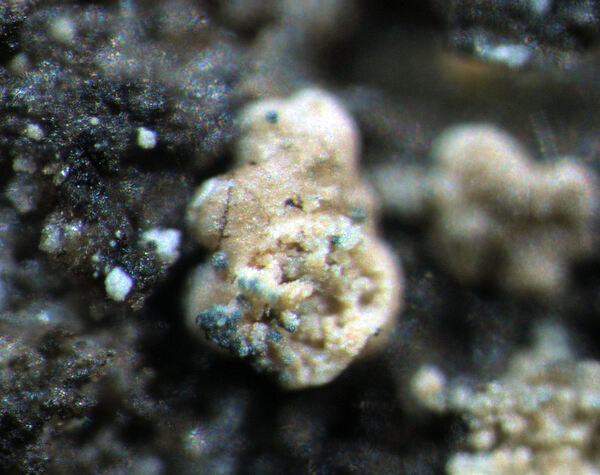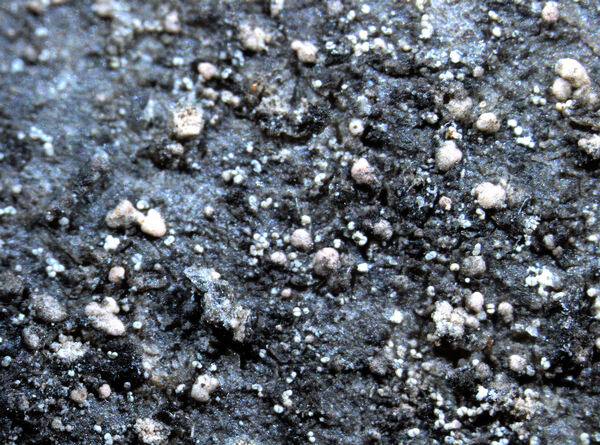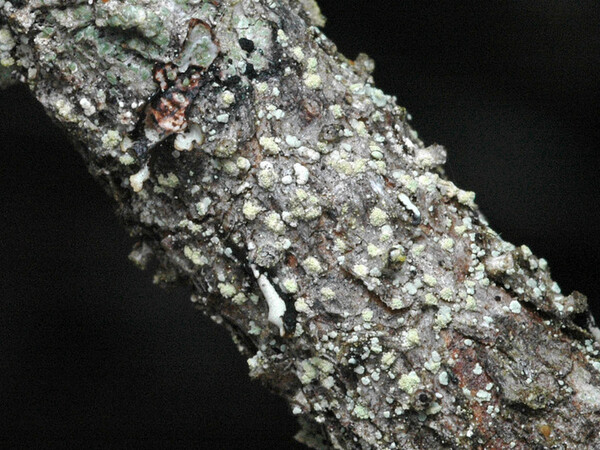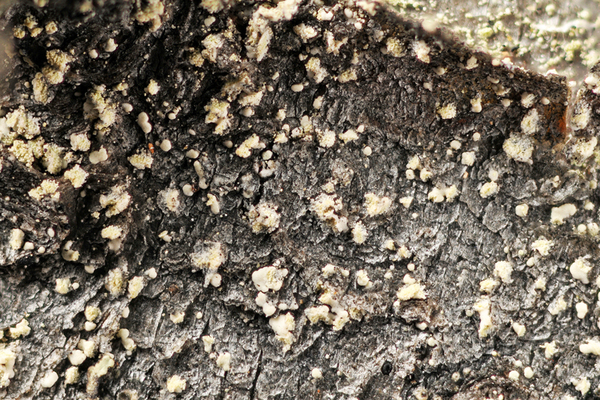Toensbergia leucococca (R. Sant.) Bendiksby & Timdal
Taxon, 62, 5: 951, 2013. Basionym: Hypocenomyce leucococca R. Sant. - in Moberg, Thunbergia, 2: 3, 1986
Synonyms: Pycnora leucococca (R. Sant.) R. Sant.
Distribution: N - Frl (Nascimbene & al. 2021), TAA (Nascimbene & al. 2021, 2022).
Description: Thallus crustose, areolate, usually forming small patches amongst other lichens, sometimes delimited by a dark prothallus, sorediate. Areoles circular to irregular and elongate, often subsquamulose and distinctly incised and constricted at base, flat to convex, up to 0.4(-1) mm across; esorediate surface usually distinct, smooth, dull, greyish white, pale yellowish green, or pale yellowish brown (turning yellowish brown or pink in the herbarium); soralia usually marginal and more or less labriform, sometimes laminal and more or less orbicular, or apical and subcapitate, usually well-delimited, pale green to pale yellow with a brown tinge (often turning yellowish brown in the herbarium), rarely aeruginose due to a pigment fading in K, and reacting N+ brown in the external soredia. Soredia mostly farinose, 20-45 μm in diameter. Medulla distinct, white. Apothecia and pycnidia not known. Photobiont chlorococcoid, the cells up to 15 μm wide. Spot tests: K+ brownish yellow, C+ red, KC+ red, P+ yellow, UV-. Chemistry: alectorialic acid with satellites in trace amounts.Note: this is an obligately sterile species with a thallus consisting of scattered, whitish, adnate areoles and usually marginal soralia, containing alectorialic acid and therefore turning reddish with age. It is widespread in the Holarctic region from the boreal to the nemoral-montane zone, including the Alps (most records being from the eastern part), but was still largely overlooked in Italy, where it may be more widespread, at least in the Alps.
Growth form: Crustose
Substrata: bark
Photobiont: green algae other than Trentepohlia
Reproductive strategy: mainly asexual, by soredia, or soredia-like structures (e.g. blastidia)
Commonnes-rarity: (info)
Alpine belt: absent
Subalpine belt: very rare
Oromediterranean belt: absent
Montane belt: extremely rare
Submediterranean belt: absent
Padanian area: absent
Humid submediterranean belt: absent
Humid mediterranean belt: absent
Dry mediterranean belt: absent
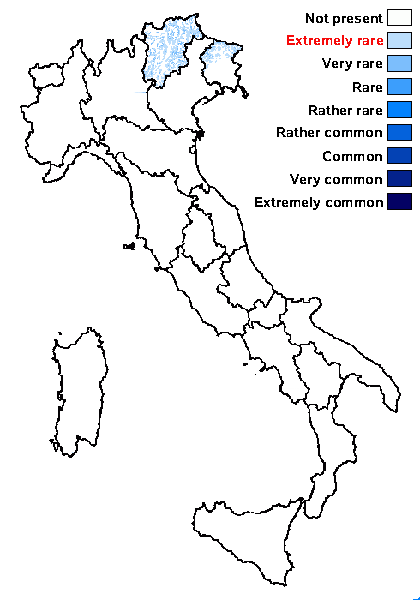
Predictive model
Growth form: Crustose
Substrata: bark
Photobiont: green algae other than Trentepohlia
Reproductive strategy: mainly asexual, by soredia, or soredia-like structures (e.g. blastidia)
Commonnes-rarity: (info)
Alpine belt: absent
Subalpine belt: very rare
Oromediterranean belt: absent
Montane belt: extremely rare
Submediterranean belt: absent
Padanian area: absent
Humid submediterranean belt: absent
Humid mediterranean belt: absent
Dry mediterranean belt: absent

Predictive model
 Index Fungorum
Index Fungorum
 GBIF
GBIF
